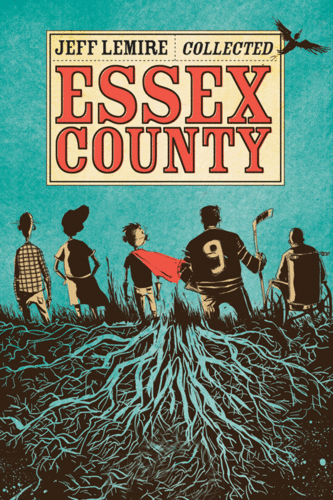Close Reading Activity
On your own or as a group, select a specific single panel from a comic. Spend time considering what the panel might be communicating to you. As explained in the “Terminology” section, scholars like Eisner and Groensteen have helped to define and theorize how we read comics, and to offer a vocabulary for this experience. In his seminal 1993 Understanding Comics, McCloud notes that the value, as well as the complexity, of comics emerges because it is a medium that has “all the potential imagery of film and painting plus the intimacy of the written word” (212). The trick, especially for literature students accustomed to privileging text, is to attend equally to both registers, image and text.
For your chosen panel, consider:
- How has the artist evoked mood? For example, what role does colour play?
- Does the art communicate the same message as the text, or is there a slippage in meaning between the two? (Consider whether the meaning would change if you removed the words from the panel.)
- What is happening in the moments immediately before and after this panel? How do you know, and how does this context help you interpret this panel?
- What is expressed in the art of this panel that could not be expressed (or would be much more difficult to express) in words?
Contexts Activity
Select a comic by a Canadian creator that interests you; you can select one mentioned in this chapter, one you are already familiar with, or one you are curious about. (If you are having a hard time deciding on a text, check out Kate Beaton’s extensive online archive of comics.) Once you have read the comic, analyze its position in the history and traditions of Canadian comics as you understand it from this chapter. Consider the following questions, identifying specific details in the comic that support your analysis of this comic’s cultural influences:
- Where does it fit? What comic tradition might it be part of? What issue(s) might it be related to?
- What aspects of comics that come before does it reflect? What aspects of comics that come after does it gesture to?
- If you cannot place it in this larger timeline of Canadian comics, why not? What makes it radically different, and is it resisting the other trends? What other traditions might this comic be drawing upon?
Comics Publishing Exercise
In this exercise, you are asked to compare and contrast a comic produced by a Canadian press like Drawn & Quarterly or Conundrum Press with one from a large publisher like Marvel or DC. You might find it interesting to select a Marvel or DC title with Canadian characters, like Alpha Flight, Deadpool, Wolverine, or Justice League Unlimited.
Turn to the two comics you’ve chosen to specifically examine the following questions:
- Consider the paratextual content, such as the cover design, layouts, introduction, etc. What features about the story or author are emphasized or ignored in the cover design? How does the style of design seem to appeal to a particular audience?
- What type of audience does the particular comics publisher appear to be attempting to attract through the types of content you found? Are they mainstream comics or alternative? How do you know?
- How do the representations of Canada differ between the two comics? Is one more likely to draw on stereotypes or assumptions? Do you find one more realistic?
Key Resources
- The academic study of comics has a rich theoretical grounding that students, particularly in the upper levels of undergraduate study, will find useful. Some key texts to begin with include:
- Eisner, Will. Comics and Sequential Art. New York: WW Norton, 2008. Print.
- Groensteen, Thierry. The System of Comics. Trans. Bart Beaty and Nick Nguyen. Jackson: UP of Mississippi, 2007. Print.
- McCloud, Scott. Understanding Comics: The Invisible Art. New York: HarperCollins, 1994. Print.
- Library and Archives Canada has archived a comprehensive website about the history of Canadian comics, titled Beyond the Funnies.
- Several popular histories of Canadian comics have been written. They are not all particularly critical (Bell, in particular, is such a booster of Canadian comics that he often oversells the success of some titles), but they give more detail to the history and development of popular comics in Canada and help remind us that there is, in fact, a lengthy comics tradition in this country.
- Bell, John. Canuck Comics: A Guide to Comic Books Published in Canada. Montreal: Matrix, 1986. Print.
- Hirsh, Michael, and Patrick Loubert, eds. The Great Canadian Comic Books. Toronto: Peter Martin, 1971. Print.
- The Routledge Companion to Comics (2017) includes a chapter titled “Canadian Comics: A Brief History” by Brenna Clarke Gray, which offers a more critical framework than the books mentioned above.
- For a thorough understanding of independent publisher Drawn & Quarterly’s role in supporting and developing the Canadian comics industry since 1990, see their twenty-fifth anniversary compilation, Drawn & Quarterly: Twenty-Five Years of Contemporary Cartooning, Comics, and Graphic Novels (2015), edited by Tom Devlin.
Works Cited
- McCloud, Scott. Understanding Comics: The Invisible Art. New York: HarperCollins, 1994. Print.
This chapter has incorporated and revised sections from the original “English-Language Comics and Graphic Novels in Canada” chapter, written by the CanLit Guides Editorial Team (2014).









 ©
©